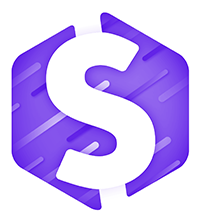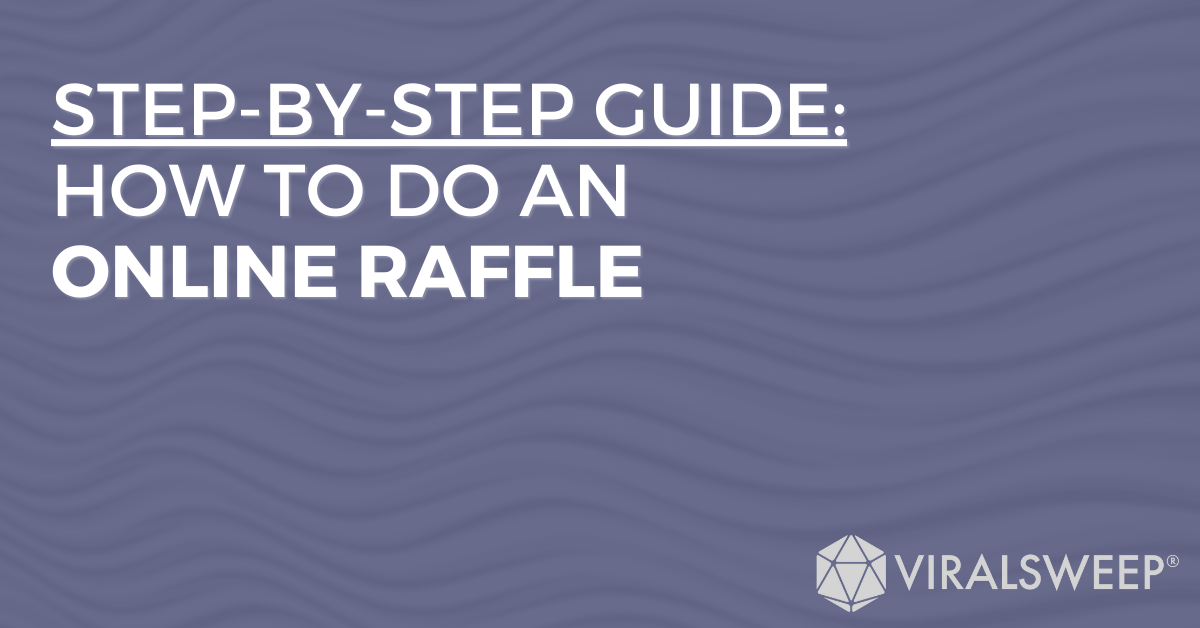We’re in a pretty unique position running ViralSweep.
The project that inspired our software started during the 2008 recession; a blog with paying advertisers that eventually became more interested in our internal tools than the blog’s audience.
Today, we continue to build these tools and we serve brands, agencies, and influencers from everywhere around the globe. Our company is profitable and lean—what Paul Graham describes as a cockroach.
I find myself in conversation with entrepreneurs who haven’t gone through the tough times yet, but they nod in agreement as I explain how we’ve built this humble business—I guess it resonates.
Here is a stream of consciousness discussing the topics that come up most frequently.
Fundamentals
Master the Basics
If I have an exciting product idea, it’s easy to start a business. However, sound fundamentals are what keep it running after I go from “zero to one.”
Recessions reward those who practice sound business fundamentals.
Now is the time to get really good at the un-sexy parts of running your business. Master the basics so that you have a foundation for growth when the tough times end, if not sooner.
Areas most founders can improve: accounting and budgeting, negotiating, SEO, managing and recruiting, organizational development, conflict resolution, and without exception, writing and communication.
Find Your North Star
Find your company’s North Star: a singular purpose the company works toward. Your Why.
Your North Star is your driving force, not a specific goal to accomplish. It should be ambitious, but specific.
If your North Star is your strategy, then goals are the tactics you employ to execute the strategy. Goals and quotas are checkpoints on the journey toward your North Star—the more your goals harmonize with your North Star, the less dissonance your team will encounter.
At ViralSweep, our North Star is to help brands grow their audience. If a feature doesn’t directly help with this, we remove it or avoid creating it.
It can be difficult to stay focused or to un-do work. Don’t be afraid to course-correct.
Owned Assets
Own the assets your business model relies upon most. If you lease or outsource an asset, you pay a premium for that convenience.


Your audience (i.e. email list) is an easy place to start. Do you own your audience, or do you lease it from someone else?
Facebook, Instagram, Snapchat, etc. have the luxury to levy taxes on your business at their own discretion. If they need to show investors a strong quarter, guess who pays that tax: you do.
The news feed algorithm doesn’t care about your business; only attention and engagement.
Expect access to your audience to be chipped away over time. Expect to be forced to pay to communicate with the audience you already built. If you own an email list, SMS list, or mailing list, you are in control—this tax is avoided.
End the one-sided lease with Facebook, Instagram, Snapchat, etc. and migrate your audience to an owned asset, such as an email or SMS list.
This applies to other aspects of business: manufacturing, real estate, talent, etc.
A recession is a good time to take stock of what you own vs. lease. Negotiate better terms on assets you still prefer to lease. Lock down the assets that give you an edge.
War Time
Recessions call for different expectations and leadership styles. Ben Horowitz explains this well with his Peacetime CEO / Wartime CEO post.
With COVID-19, the war isn’t necessarily between competitors, but against circumstance and supply chain.
A recession can be shorter than experts propose, or it could be longer. No one really knows. How can you adapt accordingly?
Be proactive. Run your own “war games” internally. Consider hypothetical scenarios and create a plan of action or document a Standard Operating Procedure for that situation.
- What happens if business quickly grows 10X? What about 10X shrinkage?
- If we stop advertising entirely, how do we attract customers? Can we leverage our current customers better?
- If half the team gets sick, do we have redundancies in place? If not, how do we manage while they get healthy (or worse)? What tools can automate customer support, logistics, etc.?
- What’s our runway? What should we do if we have less than 2 months of necessary resources? Are our employment documents up to date in case we have a wave of layoffs?
- What scenarios specific to your business or industry can you come up with?
When shit hits the fan, you’ll have already thought about how to handle the situation (or one like it). You’ll be able to act on instinct rather than fear or desperation.
A decision now = data now. Don’t put off a decision out of fear of being right or wrong. Instead, minimize the impact of any individual decision by breaking it down into smaller decisions. Let the data guide you.
Complex problems are best solved by simple solutions with straightforward execution.
Know Thy Margin
Be Frugal, but Ambitious
What are your cost of goods, overhead, runway, necessary monthly budgets, luxuries you’re willing to fight to keep, manufacturing and shipment time frames, marketing budget and expected return, etc.?
Have these numbers available at a moment’s notice—ideally in your head.
Meticulously focus business decisions around either improving your margin (ex: moving from a leased to an owned asset) or expansion (ex: innovating on product to move up-market). Be frugal, but ambitious.
Grow a Cash Cushion
Develop and keep a cash cushion to minimize setbacks or leverage opportunities. This might not be possible immediately, but make every financial decision with this in mind.


Setbacks include: further market decline, shutdowns and lockdowns, furlough, or competition (typically best to ignore competition and focus on your own brand and customer development).
Opportunities could be: changing customer behavior (i.e. Zoom), changing marketing conditions (real estate), or new technologies or social norms enabling old ideas.
Having a cushion buys the peace of mind required to stay calm and focus.
Cut the Fat
Stay lean. Use this time to streamline your product. There’s a good chance your business has a feature or product that won’t be missed by your customers. Now is the time to simplify.
Under-performing products might have a purchaser on the market, like Tiny Capital.
Optionality, Levers, and Growth Traps
Once profitable, more important than generating more revenue is having the ability to move quickly. High growth may feel exciting, but do you want a bigger business, or a healthier business?
Forced growth is capital-intensive. Rather than a singular focus on growth, consider taking the time to explore and connect ideas to find options no one else has considered—opportunities hiding in plain sight.
Have patience. “Slow is smooth, smooth is fast.”
Don’t pursue a “maybe.” It’s either, “Hell yeah!” or no. Use your North Star as a litmus test for these ideas.
You can adjust a few levers to improve your business without growing: increase margins, decrease support requirements, increase brand loyalty, streamline production.
What levers make your business more fundamentally sound? Do you actually need a bigger business?
One healthy business can fund another.
Marketing
Micro-testing
Instead of going all-in on one campaign or project, test out the smallest possible iteration first. Micro-test.
A small handful of the experiments will carry outsize returns. Be mindful of the 80/20 rule of thumb: 20% of your efforts will provide 80% of the results.
Remember, consumer behavior changes as a recession ebbs and flows. Keep testing after you find some wins—stay on top of the changes.
Better yet, build and test channels that perform well regardless of the economic landscape. Customer development is the strongest lever in staying recession-resistant:
- Support: response time and time-to-results are key
- Success: get hands-on, help customers get the most out of your product
- Content: educate or entertain customers—ideally both
- Referrals: driven by active, loyal customers
Look for flywheel opportunities that each help build the momentum off each other. For instance, educating customers may increase loyalty, and customer loyalty may increase referrals per customer. 1 + 1 = 3.
Email is king. Hopefully you’ve managed to build an email list. The best time to start one was yesterday. The next best time is now.
Generally, sending more sales emails will generate more sales, but the most value long-term lies in using your email list to build brand equity.


Commit to producing content 5X more educational or entertaining than any other in your space. The bar for good content is surprisingly low, and the ceiling is surprisingly high.
Used sparingly, special promotions, limited community access, or limited product releases work very well.
Don’t fudge list numbers just to feel good about having a large audience—you’d only be lying to yourself and to customers who joined in earnest.
Keep your list clean. Purge inactive customers frequently. Make it easy to leave or unsubscribe. List size doesn’t matter as much as your response rate. A clean, focused list is also cheaper to maintain.
You want to know with certainty that anyone on your list actually wants to be there.
Discounts
No.
Discounts are a race to the bottom. A cheaper price is very different from providing more value.
Think back to the 2008 recession with Groupon and LivingSocial, who oversold coupons and gift cards, siphoning companies’ margins when they needed them most.
“But my competitors offer discounts!” Let them. They’re eating their own margins and providing you an opportunity to create brand equity for your company that holds value, rather than diminishes.
If you need more revenue and can’t charge more for your product, figure out why and improve your product rather than making your product cheaper.
Discounts can be effective on a case-by-case basis for customers who are genuinely struggling, as an act of grace.
Position the deal so it is clearly designed to help customers in a time of need. For example: $0/mo for the next 2 months (longer if circumstances dictate). The customer’s best interest is the priority, not your bottom line.
Adapt and Innovate
Rather than lower the value of your product, adapt and innovate. Now is the time to tinker.
A great example of this is the restaurant booking service, Tock.
Restaurants were effectively shut down due to COVID-19, threatening their operation and supply chain. Most restaurants had to furlough employees.
Tock acted quickly and launched Tock To Go within a week, affording restaurants the ability to keep their staff employed and sell meals for zero-contact pick up.
Instead of “mortgaging their future” by selling gift cards, restaurants can stay afloat and keep their suppliers in business thanks to Tock’s quick adaptation to circumstances.
General advice
Form a Cohort
Group up with a handful of people in a similar situation to you: other business owners, people in the same industry or city, etc.
Connect at regular intervals. Share your progress and keep up to date with each other members’ progress. When you can, help another member directly. Ask for help when you need it—you will never get help if you don’t ask for it.
Keep each other accountable, but have fun with it.
Show Up
Spoils go to the person who shows up every day. Do your work and call it a day when you’re done. Hustle culture will burn your candle at both ends, exciting as it may be.
Quality work can be done in less time than is the social norm. Doing 3-4 hours of good work per day will get you further than 8+ hours of mediocre work. I think many people working from home are realizing this while we practice social distancing.
2% Per Day
A simple heuristic I tell anyone who will listen: commit to improving something about yourself, business, or project by 2% a day. It seems minimal, but it compounds.
On good days, ride the momentum when you pass the 2% mark and keep going until you fatigue. On bad days, call it at 2%. Start again tomorrow. You will have bad days—don’t fight it.
Consistency is your secret weapon.
Similar advice from writers is to write “2 crappy pages” a day. The days of good work will carry you through.
On Health
Recessions can be very stressful, especially for business owners. Marginal improvements in these four things will have a huge impact in your day-to-day life: sleep, diet, exercise, and a means to reflect.
Sleep: 8-10 hours a day of quality sleep prevents many issues. Sleep is effectively detox time for your brain; depriving yourself of enough sleep is effectively poisoning yourself.
I use a Whoop band to track sleep, a white noise machine, blackout shades, and a humidifier, which all seem to work great.
Diet: Eat less than you normally might. Eat more colors. Avoid sugars and fried food where you can (it gets easier over time).
A healthy microbiome is probably more important than we realize, so eat 12 things with roots per day if you can. You probably don’t need a crazy diet, just a high five when you get the simple things right.
Exercise: Poor sleep and diet make it very difficult for exercise to show any benefit; you can’t brute force yourself into good health via exercise.
Aim for at least 30 minutes of elevated heart rate per day. If you want to get in great shape, do strength training twice a week and document your progress with a specific goal in mind. It’s not rocket science, you just need to do it (see ‘Show up’ section above).
Reflect: Your brain needs downtime to process everything from the day. This is why sleep is so important. During the day, meditation and journaling are simple ways to reflect out of habit—I personally enjoy walking through a forest.
Don’t forget to wash your hands. You can’t build a business if you or a loved one is sick.
Working From Home
We’ve been a remote team at ViralSweep since before 2012 when we officially formed. Many of you may be new to it.
Working from home can be liberating.


A daily routine will keep you sane and productive; it can take some time to find this routine, be patient. At ViralSweep, we tend to fit our workouts in before or after lunch, giving us two blocks of productive time in the morning and afternoon.
Set firm hours. Working from home doesn’t mean you have to be available 24/7—boundaries are more important.
20/20/20. Every 20 minutes, look at something at least 20 feet away for 20 seconds to prevent eye strain. Stretch your arms and wrists every 45-60 minutes to avoid carpal tunnel issues.
Invest in a good chair.
For managers, know that the fastest way to kill your team’s morale is to micro-manage.
Your job is to empower your employees and make them feel comfortable. Never spy on your employees; as soon as the coast is clear they will leave.
Set expectations, not quotas. Then, lead by example. Get your work done and call it a day if you finish early.





















